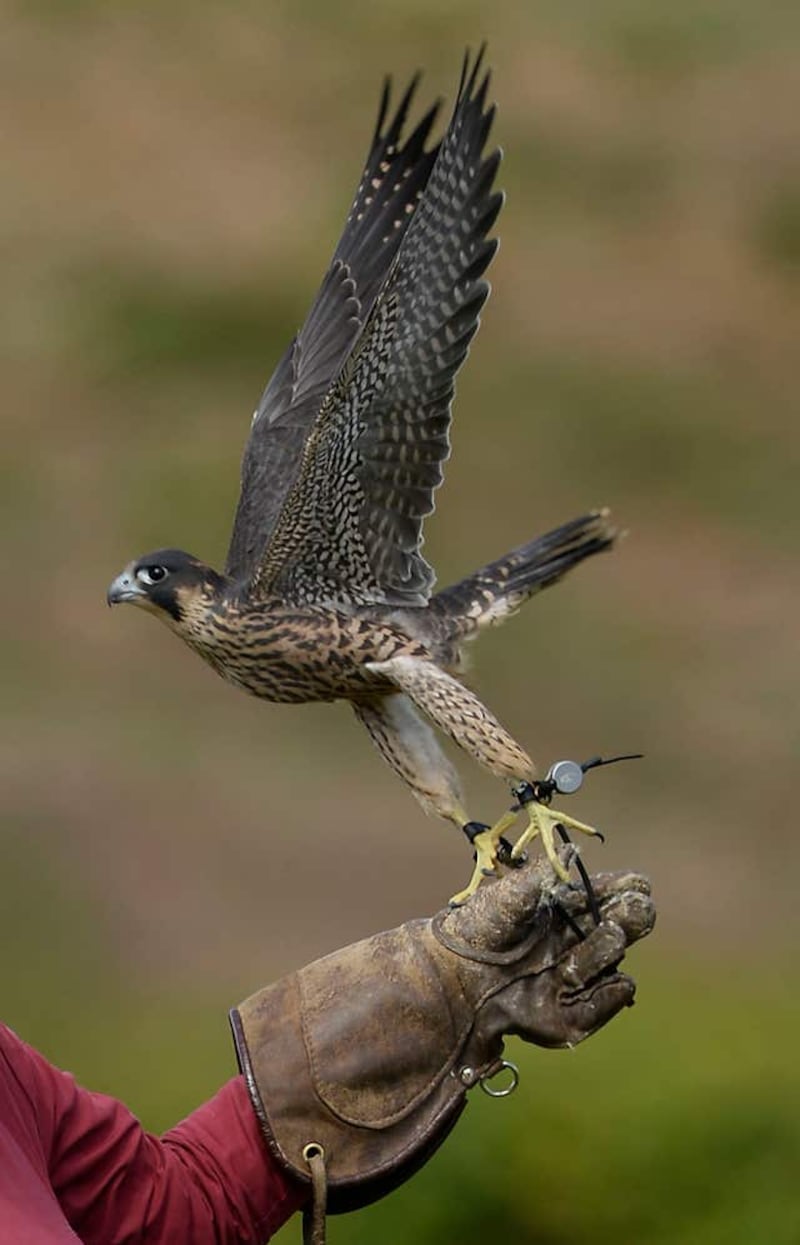Peregrine falcons attack their prey on the wing as if they were air-to-air guided missiles, a study has found.
Lessons from the birds’ control strategy could aid the development of robot interceptors designed to bring down rogue drones, scientists believe.
For the study, researchers obtained a birds-eye view of falcons in flight using miniature video cameras attached to the raptors’ backs.
They also analysed flight patterns using GPS tracking devices carried by the birds.
Eight falcons were tested with dummy prey thrown into the air or towed behind a remotely controlled drone.
The video recordings also showed opportunistic attacks on live targets, including five passes at a duck that was eventually forced to land.
Lead investigator Professor Graham Taylor, from Oxford University’s Department of Zoology, said: “Falcons are classic aerial predators, synonymous with agility and speed.
“Our GPS tracks and on-board videos show how peregrine falcons intercept moving targets that don’t want to be caught.
“Remarkably, it turns out that they do this in a similar way to most guided missiles. Our next step is to apply this research to designing a new kind of visually guided drone, able to remove rogue drones safely from the vicinity of airports, prisons and other no-fly zones.”
The scientists were surprised to find that the peregrine falcon’s “terminal attack” trajectory followed a mathematical guidance law used to steer homing missiles to their targets.
Known as “proportional navigation” (PN), the system does not make it necessary to know a target’s speed or distance. Instead it relies on what happens to the missile’s line-of-sight as it chases its target.
If the line-of-sight does not change direction as the range closes, it means the missile is on a good interception course.

When a course correction is needed, the rate of turn is proportional to the speed at which the line-of-sight angle changes.
The scientists found that peregrine falcons followed this rule, while making adjustments for their flying speed – a lot slower than that of a guided missile.
Peregrine falcon-style PN guidance tuned to low flight speeds could be used to steer visually-guided interceptor drones, said the researchers, writing in the journal Proceedings of the National Academy of Sciences.
They could help tackle the growing problem of drones flying drugs and mobile phones into prisons, or posing a danger to planes around airports, the scientists claimed.
The study was conducted in the Black Mountains of south-east Wales.
Co-author Dr Caroline Brighton, also from Oxford University, said: “We spent four field seasons flying falcons in the Welsh hills, working with an experienced falconer and a qualified drone pilot.
“It was very exciting to study these sleek, formidable aerial predators, and to watch them as they chased down our manoeuvring lure towed behind a small remote-controlled airplane – then, through our computer modelling, to reveal the secret of their attack strategy.”








